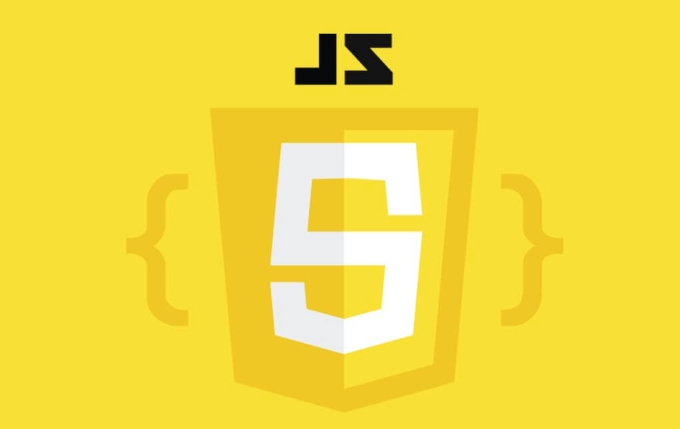var vs let vs const: a quick JS roundup explainer
var、let和const的区别在于作用域、提升和重复声明。1. var是函数作用域,存在变量提升,允许重复声明;2. let是块级作用域,存在暂时性死区,不允许重复声明;3. const也是块级作用域,必须立即赋值,不可重新赋值,但可修改引用类型的内部值。优先使用const,需改变变量时用let,避免使用var。

JavaScript里var、let和const的区别,其实不复杂,但挺关键。它们都能用来声明变量,但行为上有些重要差别,特别是在作用域和提升(hoisting)方面。

1. var:老派变量,容易出错
var是最传统的声明方式,但它有几个“坑”:

- 函数作用域:不是块级作用域,也就是说在if或者for里面声明的变量,在外面也能访问。
-
变量提升(Hoisting):变量会被“提到”当前作用域顶部,所以你甚至可以在声明前使用它,值是
undefined。 -
可重复声明:同一个变量名可以用
var重复声明多次,不会报错。
举个例子:
if (true) {
var x = 10;
}
console.log(x); // 输出10,因为var不是块级作用域现在一般建议少用var,除非你需要兼容非常旧的浏览器或者有特殊需求。

2. let:现代替代品,更安全
let是在ES6引入的,解决了var的一些问题:
- 块级作用域:只在当前的代码块内有效,比如if、for、while这些结构。
- 不会重复声明:同一个作用域中不能重复用
let声明同一个变量。 - 仍然会提升,但不会初始化:你可以理解为提升了位置,但不能在声明前访问,否则会报错(叫做暂时性死区 TDZ)。
例子:
if (true) {
let y = 20;
}
console.log(y); // 报错:y未定义适合大多数需要“变量”的场景,值可以变,但命名要清晰。
3. const:常量?其实是不可重新赋值的变量
const也属于ES6新特性,很多人以为它是用来声明“常量”的,其实它的意思是变量名不能再次被赋值。
- 块级作用域:跟
let一样。 - 必须立即赋值:声明时就得给值。
- 不能重新赋值:比如
const z = 5; z = 10;会报错。 - 对象/数组内容可以改:如果值是引用类型,里面的属性或元素是可以修改的。
例如:
const obj = { name: 'Tom' };
obj.name = 'Jerry'; // 合法
obj = {}; // 报错:不能重新赋值推荐优先使用const,除非你真的需要改变变量指向的对象或原始值。
实际选择建议:
- 想清楚要不要变:
如果变量值不需要改变,就用const,防止意外赋值。 - 需要改值的时候:
使用let,确保作用域清晰。 - 尽量避免用
var:
它的行为容易导致错误,特别是新手容易踩坑。
基本上就这些。这三个关键字看起来差不多,但用对了能减少很多bug。
The above is the detailed content of var vs let vs const: a quick JS roundup explainer. For more information, please follow other related articles on the PHP Chinese website!

Hot AI Tools

Undress AI Tool
Undress images for free

Undresser.AI Undress
AI-powered app for creating realistic nude photos

AI Clothes Remover
Online AI tool for removing clothes from photos.

Clothoff.io
AI clothes remover

Video Face Swap
Swap faces in any video effortlessly with our completely free AI face swap tool!

Hot Article

Hot Tools

Notepad++7.3.1
Easy-to-use and free code editor

SublimeText3 Chinese version
Chinese version, very easy to use

Zend Studio 13.0.1
Powerful PHP integrated development environment

Dreamweaver CS6
Visual web development tools

SublimeText3 Mac version
God-level code editing software (SublimeText3)

Hot Topics
 1793
1793
 16
16
 1736
1736
 56
56
 1588
1588
 29
29
 267
267
 587
587
 How to work with dates and times in js?
Jul 01, 2025 am 01:27 AM
How to work with dates and times in js?
Jul 01, 2025 am 01:27 AM
The following points should be noted when processing dates and time in JavaScript: 1. There are many ways to create Date objects. It is recommended to use ISO format strings to ensure compatibility; 2. Get and set time information can be obtained and set methods, and note that the month starts from 0; 3. Manually formatting dates requires strings, and third-party libraries can also be used; 4. It is recommended to use libraries that support time zones, such as Luxon. Mastering these key points can effectively avoid common mistakes.
 Why should you place tags at the bottom of the ?
Jul 02, 2025 am 01:22 AM
Why should you place tags at the bottom of the ?
Jul 02, 2025 am 01:22 AM
PlacingtagsatthebottomofablogpostorwebpageservespracticalpurposesforSEO,userexperience,anddesign.1.IthelpswithSEObyallowingsearchenginestoaccesskeyword-relevanttagswithoutclutteringthemaincontent.2.Itimprovesuserexperiencebykeepingthefocusonthearticl
 What is event bubbling and capturing in the DOM?
Jul 02, 2025 am 01:19 AM
What is event bubbling and capturing in the DOM?
Jul 02, 2025 am 01:19 AM
Event capture and bubble are two stages of event propagation in DOM. Capture is from the top layer to the target element, and bubble is from the target element to the top layer. 1. Event capture is implemented by setting the useCapture parameter of addEventListener to true; 2. Event bubble is the default behavior, useCapture is set to false or omitted; 3. Event propagation can be used to prevent event propagation; 4. Event bubbling supports event delegation to improve dynamic content processing efficiency; 5. Capture can be used to intercept events in advance, such as logging or error processing. Understanding these two phases helps to accurately control the timing and how JavaScript responds to user operations.
 How can you reduce the payload size of a JavaScript application?
Jun 26, 2025 am 12:54 AM
How can you reduce the payload size of a JavaScript application?
Jun 26, 2025 am 12:54 AM
If JavaScript applications load slowly and have poor performance, the problem is that the payload is too large. Solutions include: 1. Use code splitting (CodeSplitting), split the large bundle into multiple small files through React.lazy() or build tools, and load it as needed to reduce the first download; 2. Remove unused code (TreeShaking), use the ES6 module mechanism to clear "dead code" to ensure that the introduced libraries support this feature; 3. Compress and merge resource files, enable Gzip/Brotli and Terser to compress JS, reasonably merge files and optimize static resources; 4. Replace heavy-duty dependencies and choose lightweight libraries such as day.js and fetch
 A definitive JS roundup on JavaScript modules: ES Modules vs CommonJS
Jul 02, 2025 am 01:28 AM
A definitive JS roundup on JavaScript modules: ES Modules vs CommonJS
Jul 02, 2025 am 01:28 AM
The main difference between ES module and CommonJS is the loading method and usage scenario. 1.CommonJS is synchronously loaded, suitable for Node.js server-side environment; 2.ES module is asynchronously loaded, suitable for network environments such as browsers; 3. Syntax, ES module uses import/export and must be located in the top-level scope, while CommonJS uses require/module.exports, which can be called dynamically at runtime; 4.CommonJS is widely used in old versions of Node.js and libraries that rely on it such as Express, while ES modules are suitable for modern front-end frameworks and Node.jsv14; 5. Although it can be mixed, it can easily cause problems.
 How to make an HTTP request in Node.js?
Jul 13, 2025 am 02:18 AM
How to make an HTTP request in Node.js?
Jul 13, 2025 am 02:18 AM
There are three common ways to initiate HTTP requests in Node.js: use built-in modules, axios, and node-fetch. 1. Use the built-in http/https module without dependencies, which is suitable for basic scenarios, but requires manual processing of data stitching and error monitoring, such as using https.get() to obtain data or send POST requests through .write(); 2.axios is a third-party library based on Promise. It has concise syntax and powerful functions, supports async/await, automatic JSON conversion, interceptor, etc. It is recommended to simplify asynchronous request operations; 3.node-fetch provides a style similar to browser fetch, based on Promise and simple syntax
 How does garbage collection work in JavaScript?
Jul 04, 2025 am 12:42 AM
How does garbage collection work in JavaScript?
Jul 04, 2025 am 12:42 AM
JavaScript's garbage collection mechanism automatically manages memory through a tag-clearing algorithm to reduce the risk of memory leakage. The engine traverses and marks the active object from the root object, and unmarked is treated as garbage and cleared. For example, when the object is no longer referenced (such as setting the variable to null), it will be released in the next round of recycling. Common causes of memory leaks include: ① Uncleared timers or event listeners; ② References to external variables in closures; ③ Global variables continue to hold a large amount of data. The V8 engine optimizes recycling efficiency through strategies such as generational recycling, incremental marking, parallel/concurrent recycling, and reduces the main thread blocking time. During development, unnecessary global references should be avoided and object associations should be promptly decorated to improve performance and stability.
 var vs let vs const: a quick JS roundup explainer
Jul 02, 2025 am 01:18 AM
var vs let vs const: a quick JS roundup explainer
Jul 02, 2025 am 01:18 AM
The difference between var, let and const is scope, promotion and repeated declarations. 1.var is the function scope, with variable promotion, allowing repeated declarations; 2.let is the block-level scope, with temporary dead zones, and repeated declarations are not allowed; 3.const is also the block-level scope, and must be assigned immediately, and cannot be reassigned, but the internal value of the reference type can be modified. Use const first, use let when changing variables, and avoid using var.





